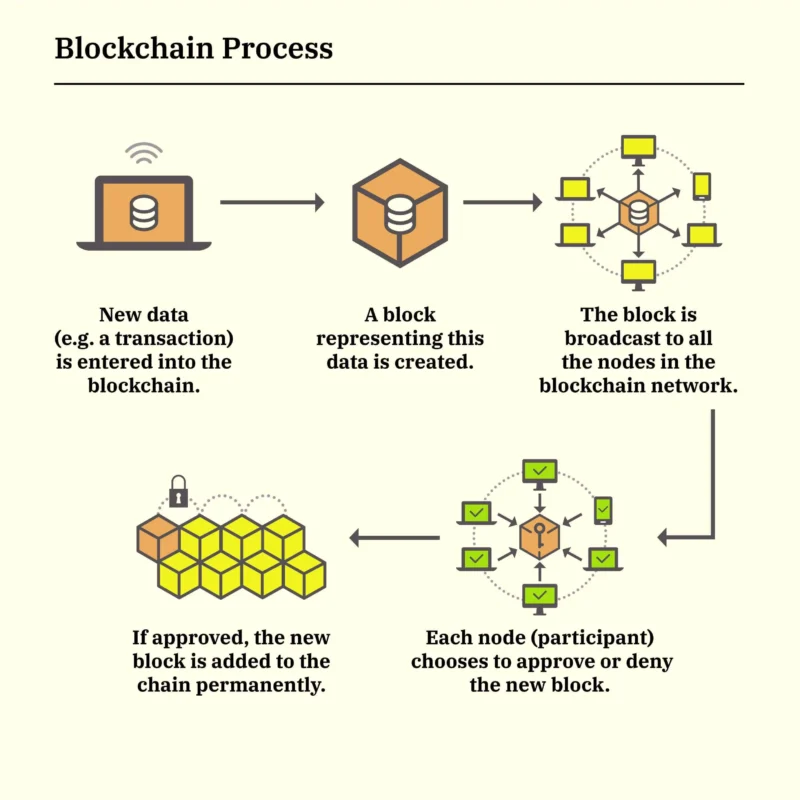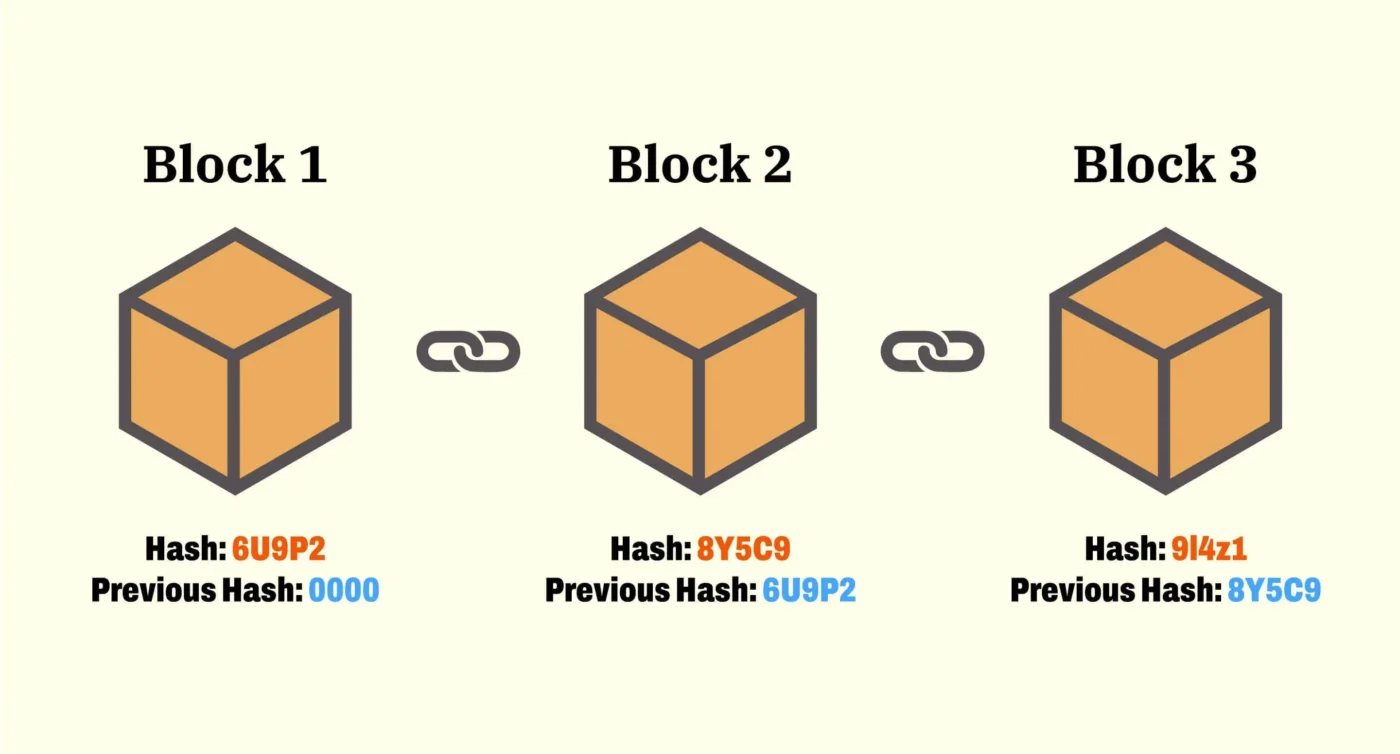In simple terms, a blockchain is a distributed database maintained by multiple nodes, each having a complete copy of the database. It records and stores data as “blocks,” using cryptographic algorithms to ensure data security and immutability.
Blockchain is composed of these “blocks” forming a “chain,” where each “block” contains the hash value of the previous one and its data. This creates a continuously growing chain known as “blockchain,” essentially an immutable data chain synchronized with timestamp markings maintained by multiple participants.

In summary, blockchain technology has the following characteristics and advantages:
01
Decentralization of Blockchain
Blockchain operates independently of any centralized institution or authority. Instead, it relies on nodes in the network to collectively validate and maintain data. This characteristic enhances data security, making it tamper-resistant.
02
High Transparency of Blockchain
The transaction records on the blockchain are publicly accessible and verifiable by any participant. This transparency fosters trust, eliminating the possibility of cheating or fraud.

03
Traceability in Blockchain
Each data change in the blockchain is assigned a unique identifier, allowing traceability back to its origin. This ensures the credibility and transparency of transactions.
04
Security and Trustworthiness of Blockchain
Blockchain employs cryptographic technology to safeguard the security of transactions. Each block contains the hash value of the preceding block, forming a chain. If someone attempts to tamper with a block, it will alter the hash value of the entire chain, leading to rejection by other nodes.

Due to these numerous advantages, blockchain technology finds extensive applications and promising prospects, primarily in the following areas:
① Financial Sector
The application of blockchain technology in the financial sector is extensive, encompassing decentralized finance (DeFi), smart contracts, digital currencies, and more.
Blockchain technology enables peer-to-peer transactions, decentralized trust mechanisms, and automated contract execution. This enhances the efficiency and transparency of financial transactions.

② Supply Chain Management
Blockchain technology can be employed to achieve transparency and traceability in supply chain management, ensuring the authenticity, source, and flow of goods. Through blockchain, the entire supply chain process of goods can be traced, enhancing efficiency and reliability.
③ Public Services
Blockchain technology can be utilized for decentralization and transparency in public services, improving the quality and efficiency of these services. For instance, blockchain can enable citizen identity verification, digital copyright protection, and healthcare information sharing.

④ Internet of Things (IoT)
Blockchain technology can be applied to achieve decentralization and interoperability of IoT devices, enhancing the security and reliability of the IoT. Through blockchain, issues such as identity verification, data security, and privacy protection for IoT devices can be ensured, providing effective solutions.
While blockchain technology offers numerous advantages, it is a double-edged sword with inherent challenges and issues that need urgent resolution at this stage.

As malicious actors can exploit blockchain to evade regulation and engage in various criminal activities, it significantly raises regulatory difficulties. Therefore, the enactment of practical regulatory laws to govern the application and development of blockchain is essential, and governments worldwide are working towards this goal.
In summary, blockchain technology is a technology with tremendous potential, capable of bringing significant innovation and transformation to various industries. Its applicability and development prospects are vast and promising.
Related:

Disclaimer: This article is created by the original author. The content of the article represents their personal opinions. Our reposting is for sharing and discussion purposes only and does not imply our endorsement or agreement. If you have any objections, please contact us through the provided channels.



